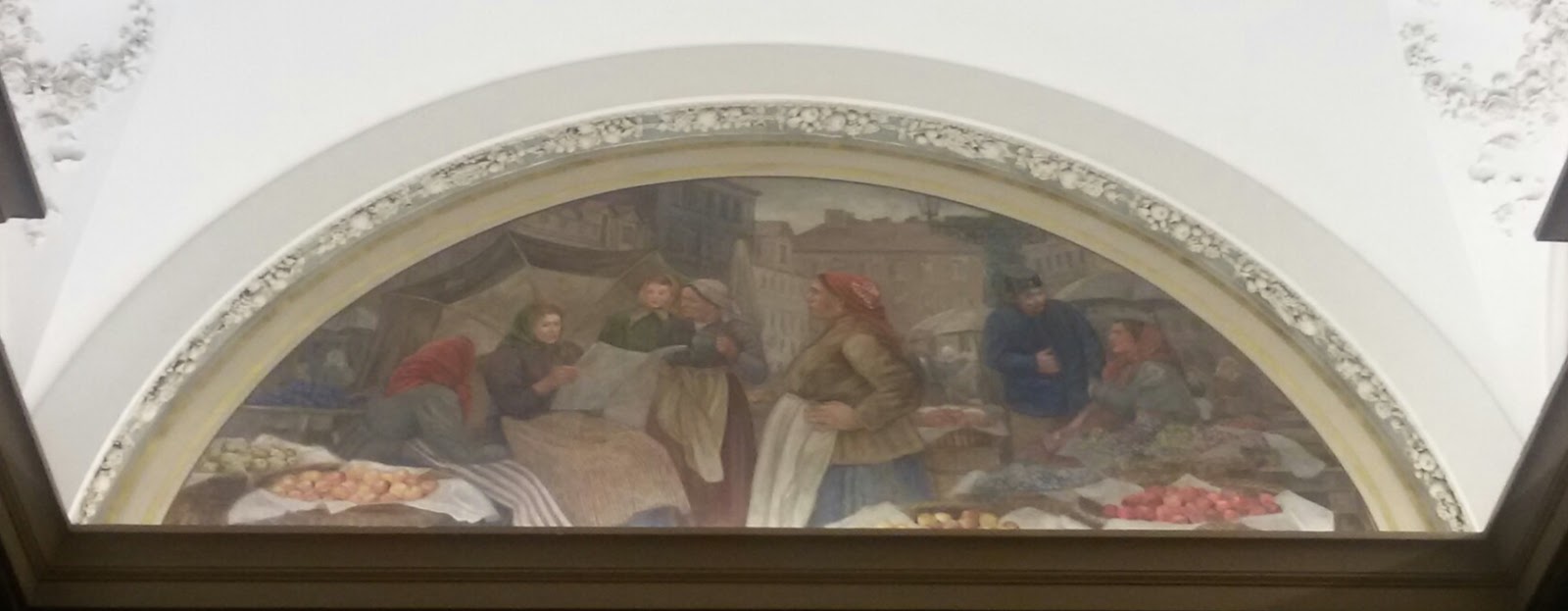Hlavním záměrem výstavby tak nákladného díla byla oslava vítězství Leopolda I. Habsburského nad Turky. Zámek byl vystavěn 1679 - 1685.
Stavebníkem zámku byl Václav Vojtěch ze Šternberka.Vyrostl v české katolické rodině. Vzdělání získal na pražské Karlo-Ferdinandově univerzitě (1661).
O dva roky později se vydal na "kavalírskou cestu" do Holandska, Anglie, Francie a Itálie.
1669 se oženil s Klárou Bernardinou z Malzanu, dvorní dámou nevlastní matky Leopolda I. Tímto sňatkem pronikl do společnosti vídeňského dvora. Avšak významná kariéra se ve Vídni nenaskytla a tak se po čase stěhuje zpět do Čech. Zde stoupá postupně na žebříčku zemských úřadů až se nakonec stal nejvyšším hofmistrem. Roku 1699 byl oceněn řádem Zlatého rouna.
Velkou pozornost věnoval správě svého majetku v Praze i na venkově.
 |
| Pohled na severní průčelí zámku Trója ze svahů vinice sv. Kláry |
Zámek (vila) v Tróji je reprezentativní stavbou určenou výhradně pro pořádání slavností. Byla inspirována typem římské vily.
Za třicetileté války získal rod Šternberků statek, mlýn a lusthaus v Zadním Ovenci (dnes Trója). Při přerozdělování majetku připadl statek V.V. ze Šternberka.
O důvodech vybudování vily s rozsáhlými zahradami na tomto nevýznamném panství se hrabě nikdy přímo nevyjádřil. Zřizování vil poblíž velkých měst se stalo módní záležitostí v 60. až 70. letech 17. století. Navíc se poblíž rozkládala královská obora a toto sousedství poskytovalo možný příslib návštěvy nejvznešenější společnosti (snad i samotného císaře, který ovšem bohužel toto báječné dílo nikdy nenavštívil).
Celý areál je osově orientován na dominantu Pražského hradu na jižním obzoru. Byl to zcela jistě záměr, protože vlastní stavbě předcházely rozsáhlé terénní úpravy. Na hlavní ose je kompozice velmi působivě gradována pro hlavní vstup od jihu, od řeky.Proto je jako kompozičně hlavní pojato zahradní, jižní průčelí vily.Vlastní vila je vyzdvižena na terasu. Mělo to i praktickou stránku, stavba se tak dostala nad úroveň záplavových vod.
Díky bočním křídlům je vymezen nehluboký čestný dvůr. Jemu dominuje o patro převýšený střední pavilon vily. Před ním je vybudováno monumentální schodiště, bohatě zdobené sochami na půdorysu oválu, které vede návštěvníka přímo do skvělého hlavního sálu v prvním patře.
Nástupová trasa (od hlavní brány u řeky) dvakrát výrazně stoupá.
Dolnímu parteru dominovala velká střední fontána (Neptun s delfínem - nedochovala se).
Styl stavby má zřejmou italskou genezi. Téma převýšeného středního dílu, rámovaného dvěma věžicemi použila v architektuře již vila Medici v pol. 16. století a později ho rozvinula vila Borghese (podle projektu Flaminia Ponzia 1608 - 15).
 |
| Vila Borghese |
Na jejich kompozici navázaly i některé pozdější zajímavé stavby - vila Carpegna, zámek Favorita u Mantovy (Niccolo Sebregondi). Tuto stavbu navštívil hrabě Šternberk při návratu z Říma roku 1664.
Velmi aktuálním motivem architektury byly i nástupy otevřenými , vnějšími schodišti, někdy sochařsky zdobenými ( např. vila Astalli (před 1663) a vila Altiery na Lateránu).
Zahrada
Rozvržena do tří částí. Spodní část na jih od vily (parter) je prostředkem pro téměř divadelně organizovaný reprezentativní vstup. Východně od parteru je na kosodélném půdorysu "štěpnice" (od 19. stol). Původně zde byla špalírová zahrada. Západně od parteru se nacházela hospodářská zahrada.
Plocha horního parteru byla v původním stavu kobercově rozvržena skladbou drobných záhonů s broderiovou výsadbou.
Východní špalírová zahrada byla protkána paprsčitou sítí dlouhých přímých alejí, které byly pohledově uzavřeny malovanými obrazy. Osmipaprsčitý rozvrh byl zamýšlen také jako připomínka heraldické šternberské hvězdy.
Sochařská výzdoba
Pro tento jistě nelehký úkol si hrabě vybral Georga Heermanna z Drážďan, kterého zřejmě doporučil architekt vily Mathey. Tento saský umělec měl za sebou asi desetiletou zkušenost z pobytu v Itálii, převážně v Římě.
 |
| Schodiště zámku Trója |
Prvním a nejdůležitějším dílem byla výzdoba vnějšího jižního schodiště. Tématem je svržení Titánů olympskými bohy do Tartaru. V horní části schodiště stojí Jupiter (s blesky) a Pallas Athena v plné zbroji. Vlevo pod Jupiterem jsou Mars, Neptun, Saturn , Herkules a Diana. Na protější straně pod Pallas Athenou se nacházejí Apollon, Merkur, Vulkán, Prometheus a |Ceres.
V levé řadě pod Jupiterem najdeme bohy bojující, vládnoucí živlům a podzemním silám, hrdinu a bohyni lovu. Jejich protějšky vedené Pallas Athenou jsou zosobněním moudrosti- bohové umění, vzdělání, práce, vynalézavosti a plodnosti. Při vstupu na schodiště zcela dole uvádějí obě řady sochy Chronose vlevo a Baccha vpravo. Vyjadřují protiklad života a smrti. Zcela nahoře trůní bohyně Vítězství Niké. Je obklopena válečnými trofejemi, mezi kterými se nachází také habsburský znak. Je to oslava skvělého tažení proti Turkům , započaté vítězstvím u Vídně 1683.
 |
| Chronos |
 |
| Ceres |
 |
| Bacchus |
Vnější parapet schodiště je osazen dvanácti bustami představujícími čtyři světadíly, živly a roční období.
Schodiště zprostředkovává vstup do hlavního sálu vily, který je celý koncipován jako vyvrcholení oslavy habsburského vítězství nad Turky.





















